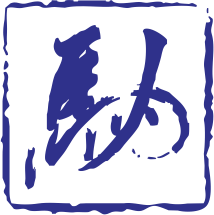Micro Inverters and AC Solar Panels
Micro Inverters
A micro-Inverter is simply a miniaturised inverter, sized to suit individual solar panels rather than a string of solar modules.
They aren’t new; they first appeared in the late 1990’s but arguably it was a bit too early and the technology suffered from reliability issues and high prices. In the last few years, though, they have re-surfaced and are starting to really take off.


Microinverter vs string inverter
An AC solar panel is simply a solar panel that has been fitted with a micro inverter so that it produces Alternating Current instead of Direct Current.
Most of the solar panels installed right now are configured like this, with one big inverter and one big DC voltage. If that 600V DC arcs then there’s going to be a bang! And possibly a fire (which is why you should never skimp on installation cost).
AC Solar Panels
A typical “Series String” array

A typical “AC Solar Panel or Micro Inverter” array

When solar panels are connected together in a series string, shading just one of them can dramatically affect the entire array (kind of like standing on a hose).
As an example: Here’s an array of 3 solar panels connected to a conventional, central inverter. One of the panels has been pooed on by a bird, which could easily reduce its output by 50%. However, it will also reduce every other panels’ output by the same amount:
But by having a Micro Inverter on each solar panel, the outputs are completely independent of each other. So that bird poo is going to only affect the soiled panel:
According to the US National Renewable Energy Laboratory, this effect can yield as much as 12% more energy.
Solar panel mismatch
When solar panels are made, they each have slightly different electrical characteristics due to imperfect manufacturing tolerances. When you connect them together in series string, this effect is called “mismatch”. Micro inverters can adapt to the individual characteristics of each panel, avoiding mismatch.
Maximum Power Point Tracking
Like the effect of mismatch, different electrical characteristics also create different Maximum Power Points for each solar panel. The maximum Power Point is the perfect point for extracting maximum power from a solar panel and micro inverter attached to individual solar panels can therefore target this point better.
Monitoring and fault finding
Almost all inverters have some level of monitoring and fault finding however; it can only see the combined output from every solar panel in the series string. A micro inverter however, can monitor each solar panel individually, allowing you to easily identify exactly what’s happening more quickly and easily.
Factory fitted
Assembling and connecting components in a factory environment is inevitably a more controlled environment and can potentially save time and money. A number of solar panel manufacturers now factory assemble micro inverters to produce AC Panels.
Redundancy
If your series string inverter develops a fault, your entire solar array stops producing power until it is fixed. If a micro inverter develops a fault, the remaining untis can continue to operate, so you should have a more reliable system.
Modularity
Series string inverters can only accept specific number of solar panels per inverter, so it’s not always possible to simply add a few more panels at a later date. AC Solar Panels, however, can be added much more easily because they are independent of each other.
Orientation
In a series string, all your solar panels need to be connected in the same orientation so they are combining to produce the right voltage at the same time to fire up the inverter. Because they operate independently, AC solar panels can be oriented in any direction and will not affect the operation of other solar panels.

